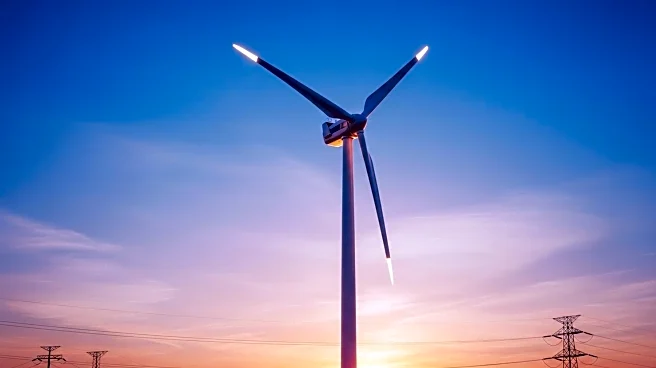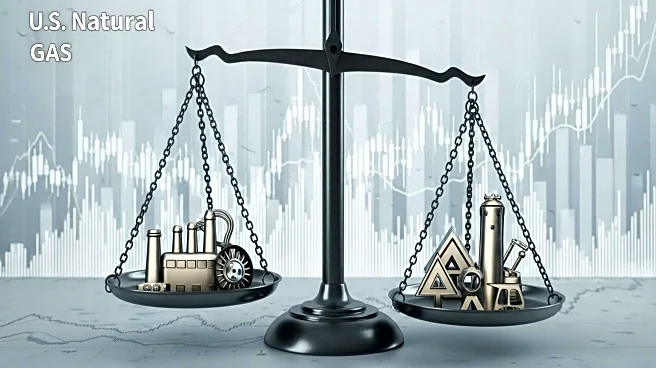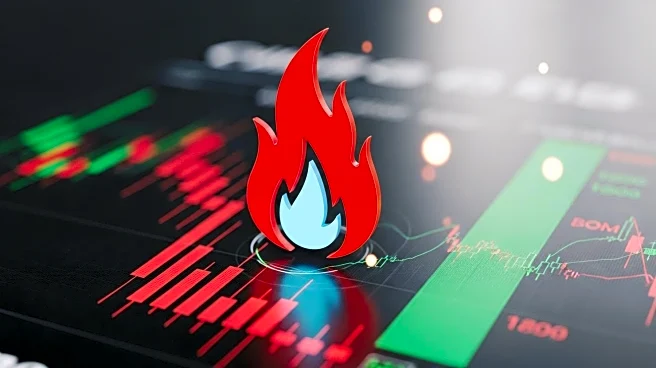What is the story about?
What's Happening?
The U.S. natural gas market is experiencing significant volatility, with speculative net positions in natural gas futures turning sharply negative as of August 2025. Non-commercial traders, including Managed Money and Swap Dealers, hold a combined net short of 3.15 million MMBtu, indicating a bearish sentiment. This contrasts with the 1.92 million MMBtu net long position held by commercial entities such as producers and processors. The divergence in positions suggests a shift in risk appetite, with speculative capital betting on prolonged weakness in natural gas prices, while commercial players hedge for stability. This situation presents an opportunity for investors to rotate into energy-linked sectors that benefit from lower gas prices, such as utility companies and industrial conglomerates.
Why It's Important?
The bearish sentiment in the natural gas market has broader implications for U.S. industries. Lower natural gas prices benefit utility companies by reducing fuel costs and improving earnings predictability. Additionally, energy-intensive industries like chemicals, steel, and manufacturing stand to gain from reduced production costs, enhancing margins in the short term. However, these sectors remain vulnerable to sudden price rebounds, which could erode profit margins. The current market dynamics offer a strategic opportunity for investors to overweight industrial conglomerates with strong hedging practices, while also considering dynamic hedging strategies to mitigate risks in oil and gas equities.
What's Next?
Investors are advised to adopt a dual strategy to navigate the current market conditions. This includes sector rotation into industrial conglomerates with robust hedging mechanisms and dynamic hedging using tools like inverse ETFs or stop-loss orders to cap downside risk in oil and gas equities. Monitoring the concentration of speculative shorts among top traders is crucial, as it amplifies the risk of sudden market corrections. Additionally, the long-term demand for natural gas driven by AI-powered data centers could stabilize prices, creating a paradox where speculative shorts coexist with strong demand fundamentals.
Beyond the Headlines
The energy transition, driven by AI and renewable energy, presents long-term stabilization prospects for natural gas prices. As AI is projected to account for 8% of global power consumption by 2030, natural gas will serve as a reliable backup to renewables. This structural demand could counterbalance the current bearish sentiment, offering opportunities for industrial conglomerates investing in grid modernization or hydrogen infrastructure. The COT report serves as a roadmap for navigating the next phase of energy-linked investing, balancing short-term volatility with long-term growth potential.
AI Generated Content
Do you find this article useful?














